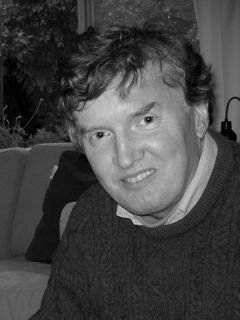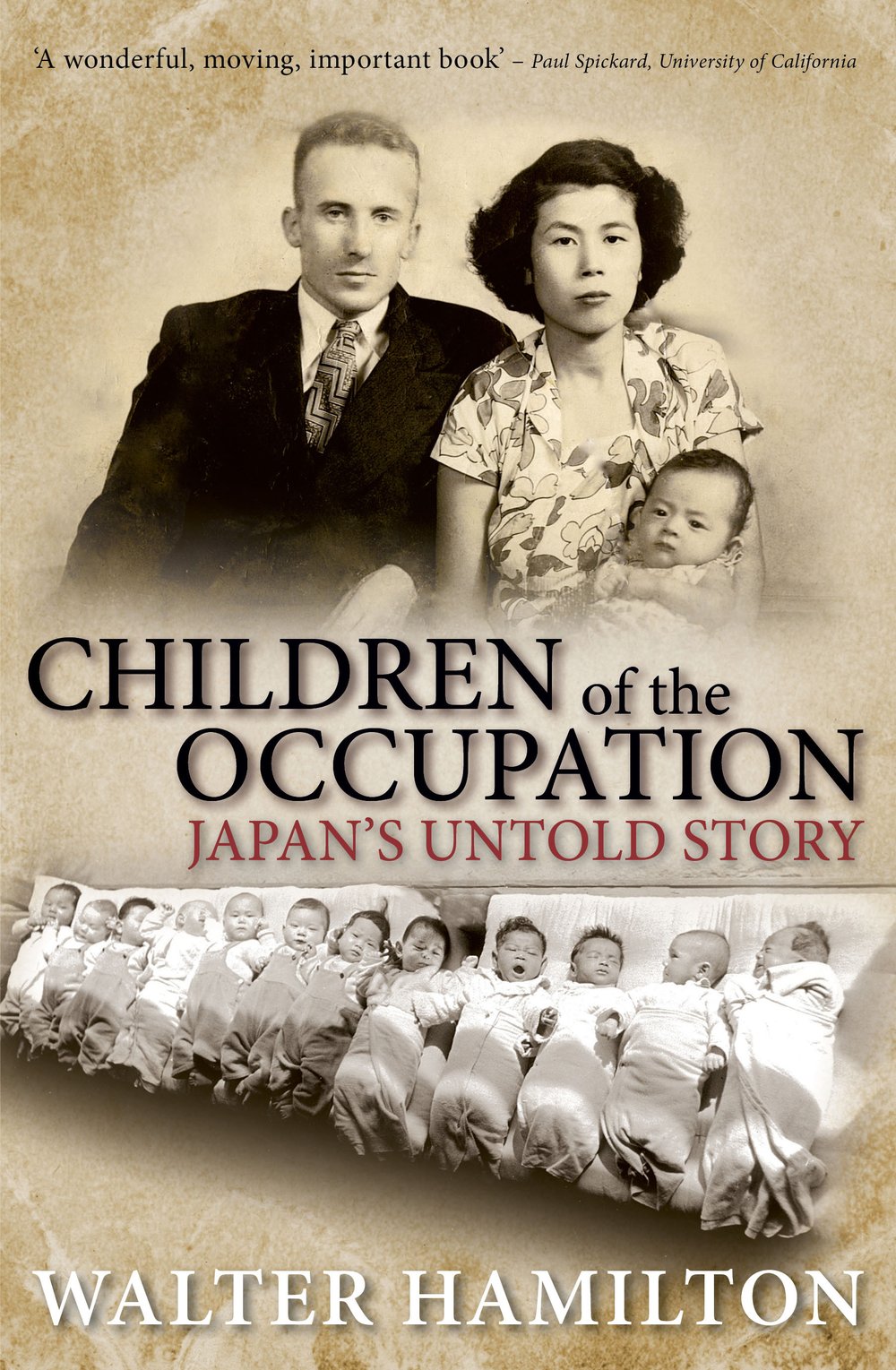Towards the end of an eventful life, George Budworth, who served with the Australian Army in Japan after the war, wrote an account describing the first time he saw his son, Peter. It was not in a hospital maternity ward but on the streets of Kure one chilly night in 1954:
In broken English, the woman said, ‘Please, you look my baby, he sick’. She turned her back to Quietly [George’s fictional alter ego]. The baby was tied on her back in a kind of carryall. Quietly reached down and flipped back the lid. Looking up at him was the pinched, undernourished white face of a very young baby. Quietly could see at a glance that the child was half Japanese – certainly not a full blood. ‘He now six weeks; he Goshu (Australian) baby-san,’ was all she said through her sobs.
George gave the woman all the money he was carrying. She later sought him out to return the change; they started a relationship; and George formed a close bond with the child, Hideki, whom he renamed Peter and formally adopted.
In 1956, as the British Commonwealth Forces Korea prepared to pull out of Japan, George was among a handful of soldiers and civilians seeking permission to take adopted children back to Australia. In the decade since the first Australian troops arrived in Occupied Japan, such a thing had never been allowed (though war brides were admitted after 1952). In George’s fictionalised memoir, Peter’s mother, Fusako, surrenders custody of her child because she fears for his future in Japan: ‘They could never go to school, never marry, or hold any job but as labourers, in other words a life worse than death was the best these children could expect’.
George was the only soldier, in the end, to gain permission. He won the support of sympathetic officers and fudged the record to suggest the child was his own. The Immigration Department found it expedient to use the case to create a precedent: henceforth, any couple wishing to adopt one of the mixed-race children would need to spend many months in Japan preparing the way. Until 1965, none managed to fulfill this condition, even though many were better placed to care for a young child than George Budworth: a single man with limited education and few resources.
The odd couple put up at George’s sister’s home in Sydney’s west, and Corporal Budworth reported for duty. One crisis followed another. The motherless two-year-old fretted terribly when ‘Poppa’ was not around and was soon lying in hospital with a raging fever. The Army began applying pressure for George to bring Fusako to Australia and marry her. Budworth deserted. For much of 1957, he tramped the back roads of rural New South Wales, his ‘Japanese shiralee’ in tow, picking up odd jobs shooting kangaroos and baiting rabbits. Barely three, Peter was learning to handle a rifle and make bush camp.
‘Pulling up stumps’ at an hour’s notice – changing states, changing schools – became ‘normal’ for the youngster. His father would eventually marry and have children of his own, but he remained closest to Peter. He called him ‘Hebo’ – a reference to his birth name – and encouraged him to cultivate his Japanese roots.
Peter kept a photograph of his mother; later in life, motivated by the resemblance to his own daughter, he set out in 1999 on a journey of discovery. With the help of a Japanese newspaper journalist, he found she was married and still living in Kure. He jumped abroad the first plane to Japan. George had died leaving many questions unanswered. Sadly, though mother and son were reunited, the language barrier kept these secrets locked up. ‘There was also a fear of my appearing insensitive and causing embarrassment,’ says Peter. We can nevertheless imagine Fusako’s relief on learning that the terrible choice she made a lifetime ago had not been in vain. The hungry infant, off the streets of Kure, was now a distinguished senior officer in the Australian Federal Police.
Walter Hamilton's book Children of the Occupation: Japan’s untold story will be published by NewSouth in June.



